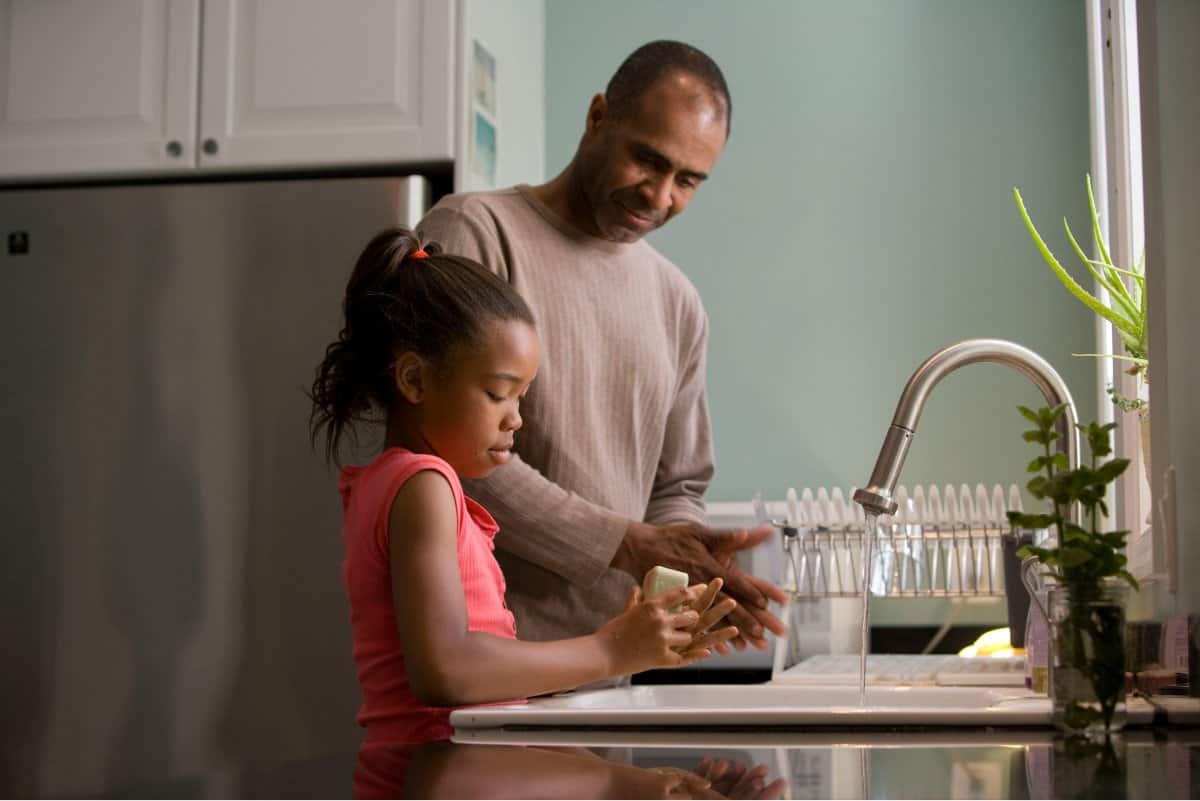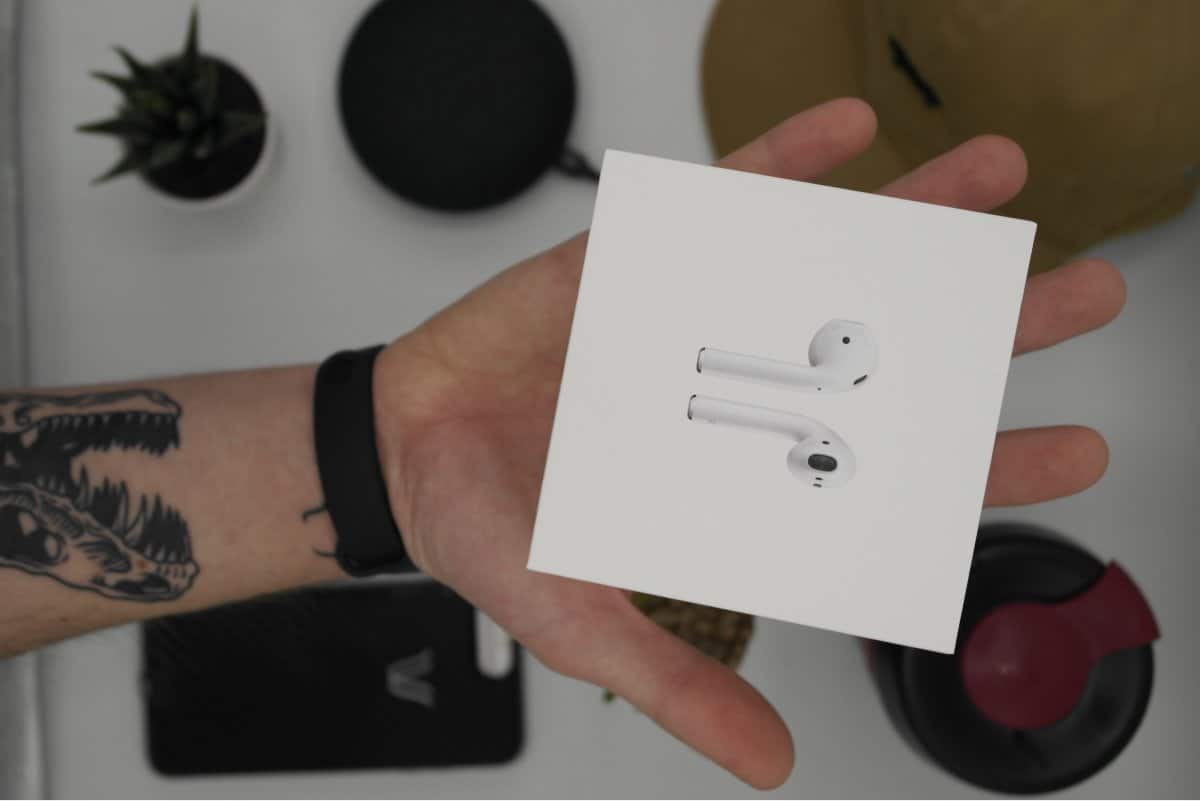Spring cleaning has always been an annual rite of passage — but typically, when we think “spring cleaning,” we’re not thinking about our electronics.
Truthfully, you might have a hard time remembering the last time you took some time to really clean and disinfect your cell phone, tablet, laptop, and other electronic devices. Considering the global health crisis on all of our minds, that’s likely changed a bit.
Disinfecting your devices could be key to keeping your family (and yourself!) healthy throughout the year.
Yet, “spring cleaning” isn’t just limited to the outside of your phone or computer. There’s also the files on them — and honestly, while you’ve probably not cleaned the outside of your phone in awhile, when was the last time you deleted unused apps, or files that have been sitting dormant since you bought it?

Here’s everything you need to know about spring cleaning your electronics — both inside and out.
Just How Dirty is Your Phone?
You’ve probably heard the statistics about the dirtiest places and objects to avoid at all costs — the remote control in your hotel room, the tray table or armrest on a plane, and any surface in a public bathroom. What you may not have heard is that the average phone is about ten times dirtier than a toilet seat in a public bathroom.
A Petri Dish in Your Pocket
As horrifying as this realization may be, it actually makes sense. While most people instinctively wash their hands after going to the bathroom and coming into contact with other dirty objects and surfaces, when was the last time you thought to wash your hands before or after touching your phone?
The bacteria you come into contact with throughout the day ends up on your phone because whatever is on your hands will transfer to the objects you touch the most — and likely stay there. While most of the bacteria on your phone is generally harmless and won’t necessarily make you sick, the surface of your phone, laptop, or tablet can be covered in a number of nasty pathogens like E. coli, MRSA, strep (streptococcus), and cold and flu causing viruses.
Wash Your Hands Often
Washing your hands throughout the day is the most effective way to keep potentially harmful germs and bacteria off your hands — and your electronic devices as a result.
If you work in a shared office space, wipe down your desk on a regular basis and wash your hands throughout the day, and as soon as you get home. If you drive, don’t forget to clean your steering wheel as well!
Don’t Take Your Phone Into the Bathroom
Even if you wash your hands, the bacteria commonly found in a bathroom can jump (or get sprayed) onto your phone and make its way back onto your hands and face when you touch it next. Don’t use your phone while in the bathroom and if you must carry it with you, keep it covered in a bag or your pocket.
Are You Adequately Washing Your Hands?
Hand washing is one of the most common and innate of human activities. We do it automatically and usually on autopilot, so chances are you probably haven’t given much thought to your hand washing “technique.” But as it turns out, most of us are probably doing it wrong.

According to the Centers for Disease Control and Prevention (CDC), you should wash your hands for at least 20 seconds every time. To start, rinse your hands under running water (whatever temperature feels most comfortable for you is fine), and work the soap into a lather while you scrub your palms, fingertips, between your fingers, the top of your hands, and underneath your fingernails.
If you’re not used to washing your hands this way it might seem like overkill at first, but clean hands are the first and most important line of defense against the germs and bacteria that eventually make their way onto your phone and everything else you touch — including your mouth and face.
If you don’t know how to gauge whether you’ve been washing for 20 seconds, try singing to yourself or doing some squats (10-15 should take you about 20-25 seconds).
How to Safely Clean Your Phone and Tablet
Despite their capacity to accumulate more pathogens than a public restroom at a mall or gas station, the good news is that phones and tablets are very easy to sanitize and clean. If you want to be proactive and spot clean your devices on a regular basis, wiping down the screen with a microfiber, lint free cloth is a good place to start.
For a deep clean, you’ll want to give your screens more than a dry rub. But in order to protect your screens and the devices themselves from damage, there are a few things you should never do when cleaning your device:
- Avoid using paper towels or tissues on your screens — they may seem soft and non-abrasive, but can actually scratch and damage the screen
- Never spray or apply glass cleaners, chemical sprays, or liquids of any kind directly onto your device
- Remember to keep the ports and jacks protected while you clean your device (more on keeping your ports clean in a minute)
How to Clean Your Electronic Devices
To get started, make sure to shut down your devices and remove the batteries. The best solution for deep cleaning your screens is good old-fashioned alcohol and distilled water (if you don’t have alcohol, household vinegar will work just as well). Combine one part alcohol and one part water in a spray bottle and mix. Spray the solution onto a microfiber cloth and gently wipe down your screens (don’t forget to clean the back of the device as well!)

Make sure not to over saturate the cloth so that moisture doesn’t seep into the device. You can also place a strip of tape over your camera and ports to keep them protected and dry while you clean. Wipe down the device with a dry cloth when you’re finished cleaning with the solution.
As a heads up, alcohol can remove the oleophobic coating on your phone’s screen. This is the coating that prevents it from smudging up from oils on your hand. However, if you routinely clean your phone, this shouldn’t be an issue.
Cleaning Your Ports and Jacks
The ports and jacks on your electronic devices are not as susceptible to germs as the surfaces you touch on a daily basis, but they can get clogged with dust and dirt particles, and should also be cleaned on occasion to keep them functioning properly. (Pro tip: If your device isn’t charging properly, a clogged or dirty port may be the culprit).
The key to safely cleaning out your ports is to use light pressure so that you don’t damage it in the process. There are several options for cleaning your device’s ports:
- Can of air
- Cotton Q-tip
- Paper clip or toothpick
If you decide to use a toothpick or paper clip, wrap the tip in clear tape with the sticky side up, which will blunt the sharp edge and act as a lint brush to pick up the dust and dirt particles.
Don’t Forget Your Headphones!
Cleaning out your earbuds and headphones is just as quick and simple as your screens and ports (and just as important). In addition to dust and dirt particles, your headphones can also become clogged with wax, sweat, oils, and dead skin cells.
Start by removing the earbuds and thoroughly wipe them down from the inside out. A damp q-tip or cloth with a simple solution of soap and warm water. Once they’re clean, be sure to dry them thoroughly with a clean dry cloth. Gently wipe the mesh screen to remove any buildup, and don’t forget the wires! Ideally, your headphones should be cleaned more frequently.

Don’t Forget Your Laptop or Computer Keyboards
Just when you thought it couldn’t get worse — brace yourself. Studies have shown that laptop and computer keyboards are up to 20,000 times dirtier than a toilet seat. In fact, keyboards and other computer accessories like a mouse and trackpad are considerably dirtier than money, which frequently changes multiple hands throughout the world.
Keyboards have more nooks and crannies than a flat cell phone or tablet screen and can appear more difficult to clean, but all you really need is a can of compressed air to lift dirt and dust out from under and between the keys. You can also wipe down the surface of the keys with a damp (not too wet) microfiber cloth. Getting moisture between the keys or spraying anything directly onto the keyboard can damage the computer.
Cleaning the “Inside” Of Your Devices
Spring cleaning is also a perfect opportunity to organize your files, declutter your hard drive by deleting old files and programs you no longer need, and to back up your files if you haven’t been doing so on a regular basis. Once you’ve effectively sanitized and de-contaminated your electronic devices, start by taking inventory of your files and programs.
Start With Your Inbox First
Nothing sparks less joy than a scroll through the average inbox. According to one report, the average inbox contains close to 200 unread emails alone, but for many people the numbers are likely much higher.
Email clutter can be distracting, stressful, and even interfere with your productivity when you have to spend too much time and energy searching for and taking action on emails. Likewise, email storage isn’t “free,” and most people aren’t even aware of the space they’re taking up by not deleting old messages.
Taking control of your inbox doesn’t have to be especially stressful or time consuming. The key is to take it in shifts and break the task down into manageable chunks. Here are some quick organizational tips for wrangling your inbox that only take a few minutes per day:
- Mass delete spam, junk, promotional, and any emails that you don’t need or want to read
- Create folders and archive old emails so that they’re out of sight but still accessible should you need them later
- Keep your work inbox exclusive to work-related correspondence
From a time management perspective, scheduling specific blocks of time to read, respond, and organize your email throughout the day can save you a lot of time and energy.
Declutter Your Phone’s Storage
When was the last time you went through every app on your phone? When was the last time you dug through your downloaded files? For many people, the answer is (sadly!) never. The reason is simple: phone storage is large, and since we often stream most of our media (and our photos are often stored in the cloud), we never really “fill up” our phones like we used to.
Yet, excess apps don’t just waste space on your device. Sometimes, they can end up running in the background, slowing your phone down and having a detrimental effect on your battery life.
There’s also the physical “clutter” they present toward your own UX. Too many apps, and you’ll be scrolling through page after page just to get to the one you actually want. Here’s our advice: if you haven’t used it in the last month, you probably can safely uninstall it.
Declutter Your Notifications
Depending on which version of iOS or Android you’re currently using, this process will be a little bit different. For Android, go to “Settings” and then select “Apps & Notifications.” From there, select “Notifications.” Here, you can select which apps can send you push notifications.
For iOS, your notification settings are visible simply under “Notifications,” which you can find under “Settings.”
While reducing your notifications probably won’t significantly speed up your device, it is a way to declutter your environment. Too many notifications can be distracting, not to mention that when everything is notifying you, then the important notifications might get lost in the noise.

Don’t Forget Your Desktop or Laptop
Your phone isn’t the only device that needs a little tidying.
At least once per year, you should blow out your desktop or laptop. Just use a can of air to blow through all of the exhaust ports on your computer. You can also blow through individual ports, too. If you can, try to get to where your fans are, though this will be a different process depending on what kind of computer you’re using.
Dust buildup can cause your computer to run hotter, which will slow it down (and can also shorten its lifespan).
Additionally, it’s considered a good idea to reformat your hard drive and reinstall your operating system (regardless of if you’re running Windows, macOS, or Linux) once every year or so. If you don’t have the time to do that, you should at least be going through and deleting applications you no longer use and removing files (such as old downloads, or temporary files).
Cleaning your devices — both inside and out — isn’t the most exciting thing in the world, but it’s crucial to do. Not only will it help keep you from getting sick, it’ll also keep you from getting frustrated from having to work on a slow, distracting device.
Out with the Old, In with the New
The best part about spring cleaning your electronics is that it makes space for the fun new apps you want to download. Obviously, we’re fans of the Proto.io app because it allows users to review projects, share your prototypes with others (mobile user testing for the win, no sign-up required), and interact with your prototypes using any and all supported touch gestures (such as pinching, swiping, tapping, tapping and holding, and more).
To see what Proto.io can do for you, check out our demos and features. You can get started by signing up for our full-featured 15-day free trial!






